Discover 11 hidden attractions, cool sights, and unusual things to do in Norfolk Coast AONB (United Kingdom). Don't miss out on these must-see attractions: Saint John the Baptist's Head, Titchwell Marsh, and Burnham Overy Staithe Windmill. Also, be sure to include Horsey Dunes in your itinerary.
Below, you can find the list of the most amazing places you should visit in Norfolk Coast AONB (England).
Table of Contents
Saint John the Baptist's Head
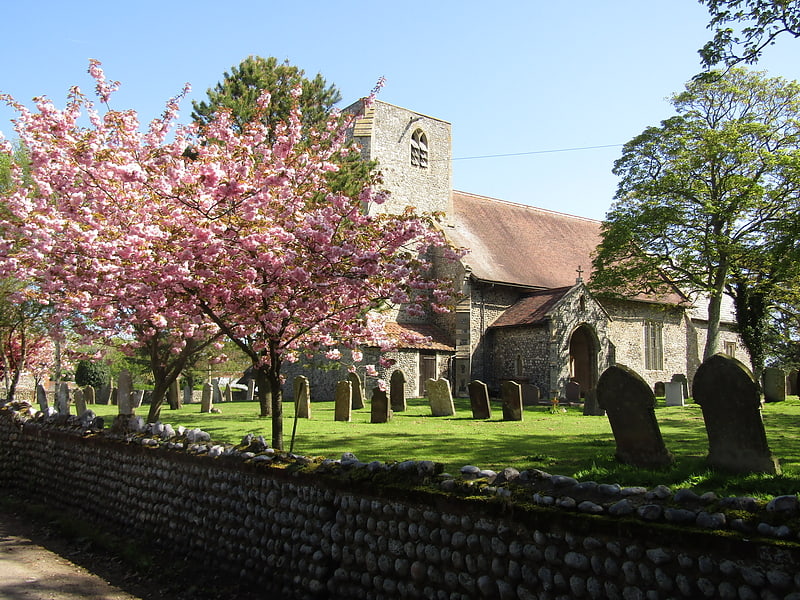
The church of Saint John the Baptist's Head is the Parish church of the coastal village and parish of Trimingham in the English county of Norfolk, England, United Kingdom. The building is a Grade II* listed building. The church is within the Church of England Diocese of Norwich, Norfolk, England.[1]
Titchwell Marsh
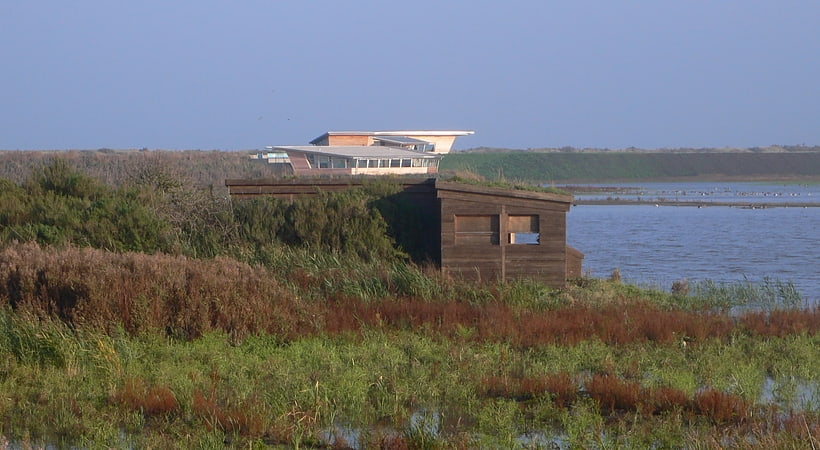
Titchwell Marsh is an English nature reserve owned and managed by the Royal Society for the Protection of Birds. Located on the north coast of the county of Norfolk, between the villages of Titchwell and Thornham, about 8 km east of the seaside resort of Hunstanton, its 171 hectares include reed beds, saltmarshes, a freshwater lagoon and sandy beach, with a small woodland area near the car park. This internationally important reserve is part of the North Norfolk Coast Site of Special Scientific Interest and the Norfolk Coast Area of Outstanding Natural Beauty, and is also protected through Natura 2000, Special Protection Area and Ramsar listings.
The reserve is important for some scarce breeding birds, such as pied avocets on the islands, and western marsh harriers, Eurasian bitterns and bearded reedlings in the reeds. To encourage bitterns to breed, the reed beds have been improved to make them wetter, and the lagoon has been stocked with the common rudd. Typical wetland birds such as the water rail, reed warbler and sedge warbler also appear, and little egrets are common. The reserve has regularly attracted rarities, as its location is important for migrating birds. Ducks and geese winter at Titchwell in considerable numbers, and the reserve shelters the endangered European water vole.
Facilities include three bird hides, a seawatching platform, two nature trails, and a visitor centre. Because of concerns about climate change, a major project in 2010 and 2011 brought improvements to the banks around the freshwater lagoon and the conversion of the brackish lagoon to tidal saltmarsh, a more effective barrier to encroachment by the sea.
Titchwell Marsh is archaeologically significant, with artefacts dating back to the Upper Paleolithic, and has remains of military constructions from both world wars. These include brickwork from a First World War military hospital and 1940s artillery targets for armoured fighting vehicles and warplanes in the Second World War.[2]
Burnham Overy Staithe Windmill
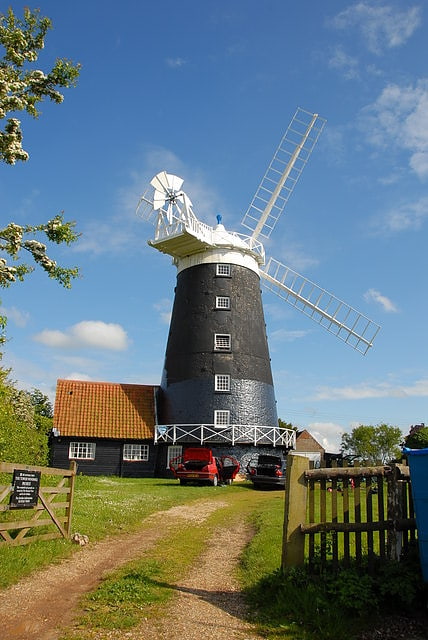
Burnham Overy Staithe Windmill is a Grade II* listed building tower mill at Burnham Overy Staithe, Norfolk, England which has been converted to holiday accommodation.[3]
Horsey Dunes

Horsey Dunes is an extensive dune system on the east coast of Norfolk, England. It is owned by the National Trust and is within the Norfolk Coast AONB. It is sometimes known as Horsey Gap. To the south is the adjacent SSSI Winterton Dunes - it is possible to walk from one to the other.
The site is notable for a large colony of grey seals which breed there each winter.
The site, together with the adjoining Winterton Dunes, hosts the largest colonies of dark green fritillary and grayling butterflies in Norfolk. Other butterflies recorded from here in numbers include small copper and common blue.
The site has been subject to illegal raves in the past, which have significantly harmed the butterfly population.[4]
Warham Camp

Warham Camp is an Iron Age circular hill fort with a diameter of 212 metres near Warham, south of Wells-next-the-Sea in Norfolk. It is a Scheduled Monument and a 5.1-hectare biological Site of Special Scientific Interest. It is in the Norfolk Coast Area of Outstanding Natural Beauty.
The fort is divided into two parts by a channel of the River Stiffkey constructed in the eighteenth century. It dates to the last few centuries before the Roman invasion of Britain, with evidence of post-occupation activity. The University of East Anglia has described it as the best-preserved hill fort in Norfolk.
This unimproved chalk grassland site is heavily grazed by rabbits and cattle. It has diverse herb species such as common rock-rose and squinancywort, and butterflies including the chalkhill blue.
There is access to the site by a footpath.[5]
Paston Great Barn
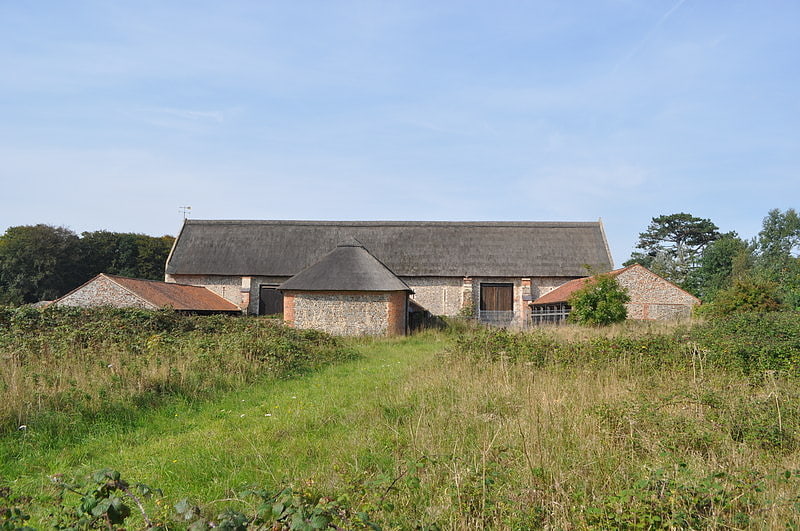
Paston Great Barn is a medieval barn near Paston Hall on the southeast edge of the village of Paston, in northeast Norfolk. It is owned by the North Norfolk Historic Buildings Trust. It dates from 1581 and is associated with the Paston family. It is a Scheduled Ancient Monument and a grade II* Listed Building. It is also a 1-hectare biological Site of Special Scientific Interest, a National Nature Reserve and a Special Area of Conservation. It is in the Norfolk Coast Area of Outstanding Natural Beauty.[6]
Babingley
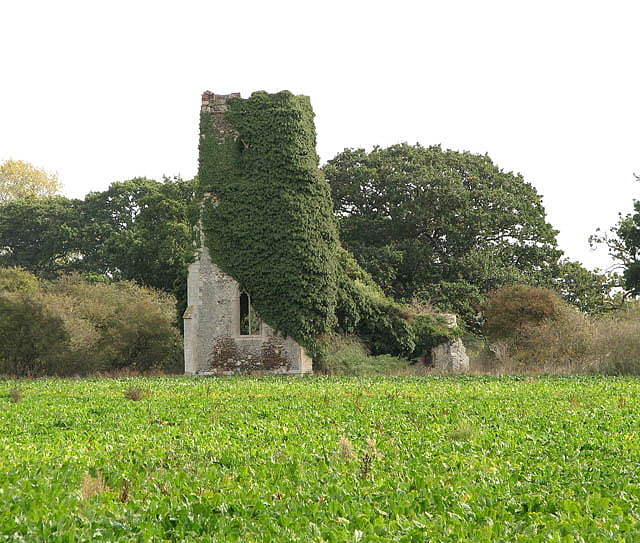
Hamlet in England. Babingley is a hamlet and abandoned village in Norfolk, England, about 1 mile northwest of Castle Rising and 5+1⁄2 miles north-north-east of King's Lynn.
The place-name 'Babingley' is first attested in the Domesday Book of 1086, where it appears as Babinghelea. The name means 'the clearing of Babba's people'.
It was a separate parish but is now part of the civil parish of Sandringham. The modern hamlet is a small group of houses along the A149 road linking King's Lynn and Hunstanton. The site of the abandoned village is in fields west of the main road, marked by the ruin of St Felix's parish church.[7]
York Cottage
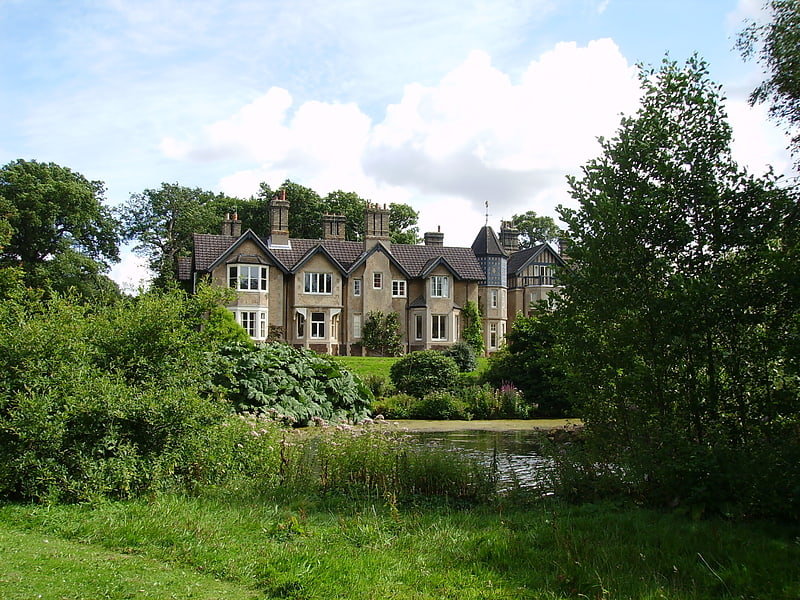
York Cottage is a house in the grounds of Sandringham House in Norfolk, England.[8]
Letheringsett Brewery watermill
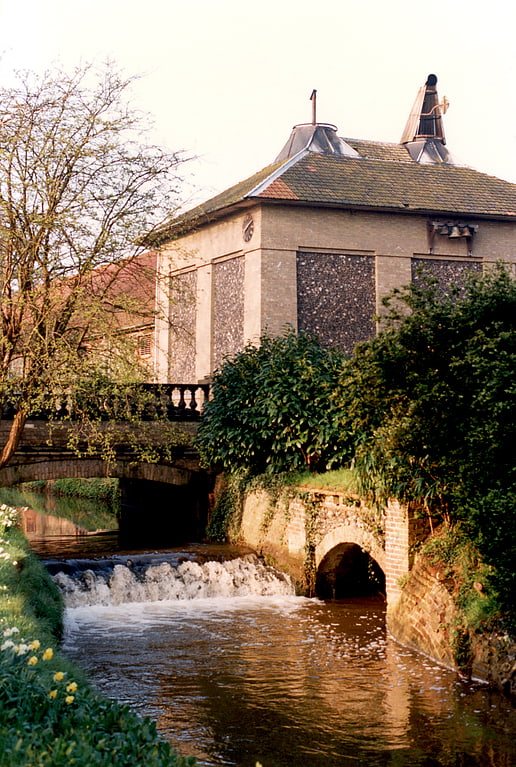
The remains of Letheringsett Brewery Watermill are located in the centre of the village of Letheringsett in the county of Norfolk. The watermill of 1784 was housed within the maltings and brewery complex founded and run by John Brereton of Letheringsett Hall from before 1721. Much of this complex still stands on the south side of the A148 Cromer to King’s Lynn road, which bisects the village on an east–west axis, and on the west bank of the River Glaven, which bisects the village south–north.
The watermill was in operation from 1784 to 1895 or 1896 for crushing malt and to power the pumps throughout the manufacturing and storage complex. It had a far more limited life as a cornmill for grinding wheat, from 1784 to about 1798, as recorded by the wife and mother of the owners, the diarist Mary Hardy. Briefly a ginger beer factory from 1896 to 1906, the complex then ceased all manufacturing. It was converted to housing 2013–15.[9]
Winterton Dunes
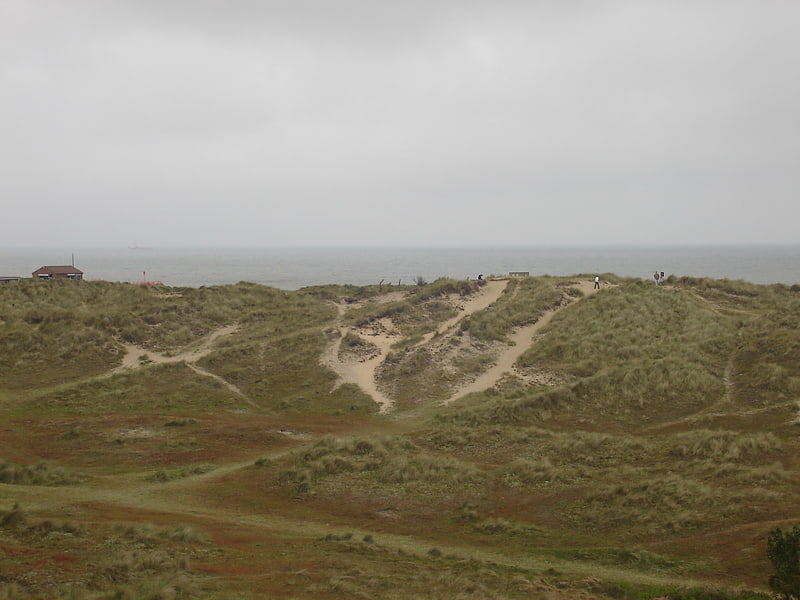
Winterton Dunes is an extensive dune system on the east coast of Norfolk, England, which has been designated as a National Nature Reserve of 109 ha. Winterton Dunes is within the Norfolk Coast AONB.
The site is unusual in that it shows greater ecological similarities to the dune systems of the Baltic - which support acidic plant communities - rather than the dunes on the North Norfolk Coast - where the sand is calcareous.
The site supports well developed areas of dune heath, wet 'slacks' between dunes and dune grassland which grades into grazing marsh and birch woodland.[10]
Glandford Watermill

Glandford watermill is situated on the River Glaven a little north of the village of Glandford within the English county of Norfolk. Glandford is in the civil parish of Wiveton within the district of North Norfolk.[11]